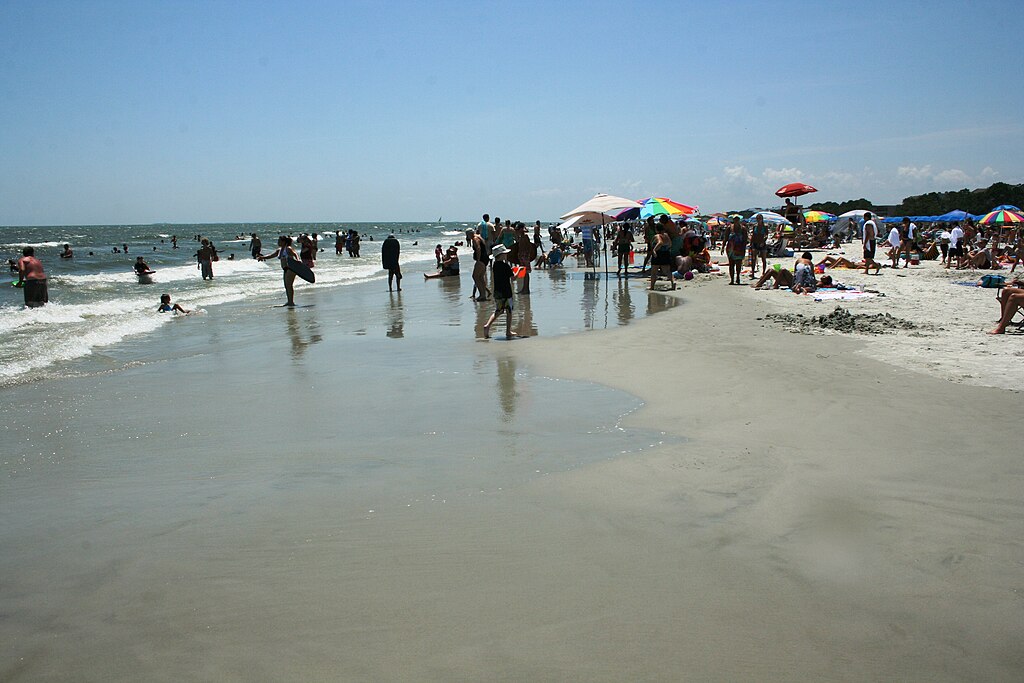U-Haul has just released its Growth Report which ranks states, metros, and cities based on each state’s net gain (or loss) of customers utilizing one-way U-Haul equipment in a calendar year. The U-Haul Growth Index is compiled from over 2.5 million one-way U-Haul transactions that occurred during the year.
As has been the case for five years, California had the largest number of people moving elsewhere and continues to rank 50th in the index. This is probably because of high taxes, high cost of housing, traffic jams, congestion, pollution, and lax enforcement of laws against criminals.

Southeastern states are still the winners, with net influxes of one-way U-Haul customers. Texas is no longer on the top of the list of growth states, however. Texas had been the No. 1 growth state for the previous three years.
Texas has been displaced this year by South Carolina. South Carolina climbed three spots in the rankings.

Hilton Head Island, South Carolina, by Thierry Caro
Texas is now the second hottest growth state followed by North Carolina, Florida, and Tennessee. Tennessee recently dropped its state income tax. It is possible that that is one of the reasons for its growth.
Texas, North Carolina, Florida and Tennessee complete the list of the top five leading growth states. Florida has been fourth or higher every year since 2015.
Oklahoma (+30), Indiana (+19) and Maine (+18) are the biggest risers year-over-year on the U-Haul Growth Index.
“State-to-state transactions from the past year reaffirm customer tendencies that have been pronounced for some time,” stated John “J.T.” Taylor, U-Haul International president. “Migration to the Southeast and Southwest continues as families gauge their cost of living, job opportunities, quality of life and other factors that go into relocating to a new state. Out-migration remains prevalent for a number of markets across the Northeast, Midwest and West Coast — and particularly California.”
New York, at No. 47 on the list, has its lowest growth ranking in a decade.
Colorado (-31), Nevada (-24), Wyoming (-22) and New Mexico (-21) saw the biggest declines in position on the index in 2024.
In terms of Metro areas, Dallas Ft. Worth is the leading U-Haul Growth Metro of 2024. Charlotte, Phoenix, Lakeland and Austin are the rest of the top five U.S. growth metros.
“We are seeing unprecedented growth in the Dallas metro area, both within the city and also suburbs like McKinney, Plano and Addison,” said Sean Fullerton, U-Haul Company of South Central Dallas president. “The cost of living is also extremely reasonable throughout the whole metro. Job growth has led to wages and earnings going up, and tax breaks have led to a lot of people moving to the area.”
Florida has seven of the top 25 growth metros, with Lakeland joined by Palm Bay, Jacksonville, Tampa, Sarasota, Fort Myers and Daytona Beach.
Texas has five metros on the list. North Carolina has three, all in the top 14.
Spokane and Boise are included in the list of Top 25 Growth Metros. The complete list is as follows:
2024 Top 25 U-Haul Growth Metros
| 1. | Dallas, TX |
| 2. | Charlotte, NC |
| 3. | Phoenix, AZ |
| 4. | Lakeland, FL |
| 5. | Austin, TX |
| 6. | Nashville, TN |
| 7. | Raleigh, NC |
| 8. | Palm Bay, FL |
| 9. | Houston, TX |
| 10. | Greenville, SC |
| 11. | Jacksonville, FL |
| 12. | Tampa, FL |
| 13. | Charleston, SC |
| 14. | Wilmington, NC |
| 15. | Sarasota, FL |
| 16. | Fort Myers, FL |
| 17. | Boise, ID |
| 18. | Richmond, VA |
| 19. | Bend, OR |
| 20. | Indianapolis, IN |
| 21. | Brownsville & McAllen, TX |
| 22. | Tyler, TX |
| 23. | Daytona Beach, FL |
| 24. | Spokane, WA |
| 25. | Springdale, AR |
The cities have a notable concentration in the Southern and Southeastern states. Many of these cities are experiencing significant growth, particularly those in Texas, Florida, and the Carolinas. For instance, Dallas, Charlotte, and Phoenix are among the top three metropolitan areas experiencing the most growth.
Population growth is an indication of potential real estate appreciation but is not the only factor. Total inventory and rate of new construction are also factors. Sometimes, it is possible to have appreciation even when population is declining. This happened in West Virginia recently. This can happen based on manipulations by the Federal Reserve. While a steady loss of population, along with unfavorable landlord-tenant law and tax policy can lead a prudent investor to avoid California, real estate appreciation is not guaranteed in states and metros on the growth list. Instead of just watching migration patterns and population changes, it is better to review predictions to get an idea of where appreciation is most likely to happen. Alternatively, Housingalerts.com lets you choose metros based on predicted appreciation, expected cash flow, or a combination of both.